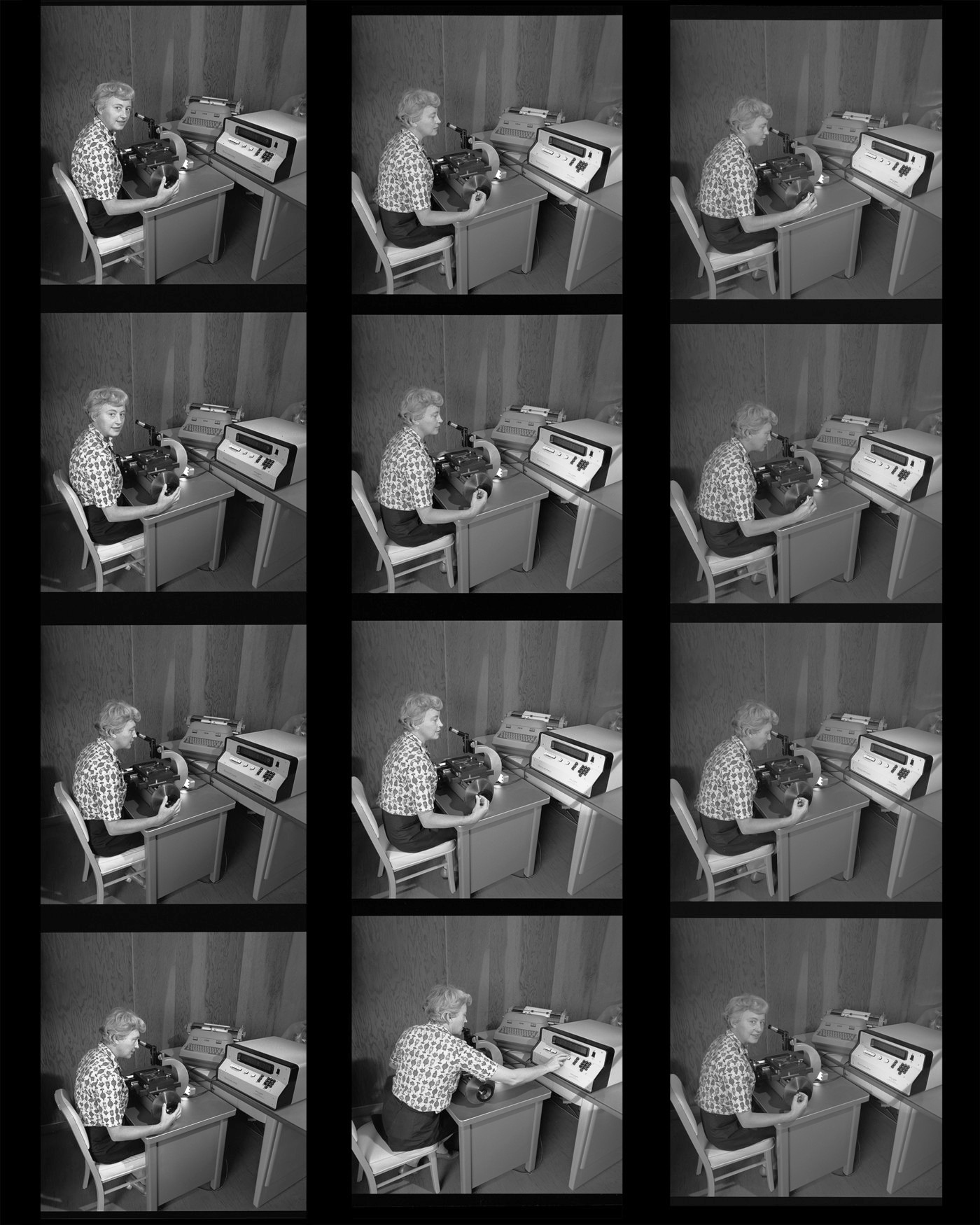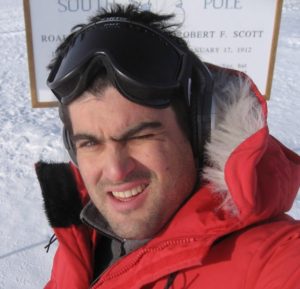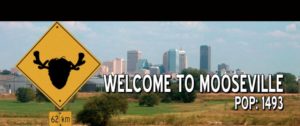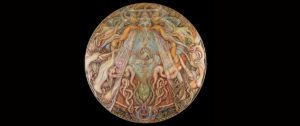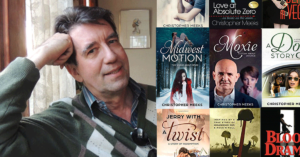Intro to Brian Keating’s “Elegy for Margaret Burbidge”:
On April 5, 2020, Margaret Burbidge, a British-American astronomer and astrophysicist, passed away at the age of 100. On April 6, 2020 Brian Keating, the Chancellor’s Professor of Physics at the University of California, San Diego, who had been a colleague of Margaret Burbidge, published “An Elegy for Margaret Burbidge.” Margaret Burbidge will be remembered for her contributions to observational astronomy, to theoretical stellar nucleosynthesis, and for her pedagogy—nurturing generations of astronomers and physicists who studied under her at prestigious institutions, including Caltech and UC San Diego. It will not be forgotten that Margaret Burbidge was a poster person for the adjective invidious being linked to the phrase “gender discrimination.”
Professor Keating is the author of Losing the Nobel Prize, one of the most awesome books I’ve read. This is a book that will educate, entertain, and inspire every fan of poignant memoir, science history and mystery. It is a volume of lay science: a book that doesn’t require the reader to understand the underlying mathematics. I will review Losing the Nobel Prize here and elsewhere soon. I would also like to recommend Dr. Keating’s You Tube channel, where you will find fascinating interviews and star-struck podcasts.
Dr. Keating tweets prolifically about topics that will interest any lay person who is interested in science. @DrBrianKeating
In Losing the Nobel Prize Dr. Keating writes, among other topics, about triumphs and heartbreaks of three groundbreaking women astronomers whose work led to Nobel Prize-worthy discoveries but who were ignored by the Nobel Prize selection committees. Based upon the work of each of these women, the prize was awarded to male colleagues instead. One was these women was Margaret Burbidge, another was her acolyte at UC San Diego, Vera Rubin. The third was Jocelyn Bell Burnell, who co-discovered the radio-emitting pulsars, a highly magnetized rotating neutron star. – James Victor Jordan
An Elegy for Margaret Burbidge
A Guest Blog by Brian Keating, Chancellor’s Professor of Physics, UC San Diego.
I met Margaret Burbidge when I arrived at UCSD as an assistant Professor in 2004. I had briefly considered another job offer, but the chance to work in the same Center — the Center for Astrophysics and Space Sciences (CASS) — Margaret established, was too tempting to turn down.
Though I was understandably nervous being in the presence of astronomical royalty, she had a way of immediately disarming young scientists with her characteristically gracious presence. She was a true scholar and her signature work, a treatise done in collaboration with Willy Fowler, Fred Hoyle, and her husband Geoff, “The Synthesis of the Elements in Stars” — known universally and simply (as few papers in physics history are) merely by the initials of the four authors, “B²FH” — revolutionized not only astronomy, but physics too.
For the first time, B²FH showed how the matter that matters — heavy elements, the iron in the hemoglobin molecule that that flows through our veins, and makes up the cores of rocky planets like earth nitrogen, the stuff of life — was formed. Margaret, as much as any other scientist gave hard evidence for Carl Sagan’s famous quip that we are all ‘starstuff’…
Lost in many descriptions of the paper is how important Margaret’s role actually was. Let me first explain why astronomy is so challenging.
Unlike, say, biologists, astronomers cannot do proper ‘experiments’. That is, we cannot change the temperature of a star, keep another exact copy in quarantine as a ‘control’, and assess the effects of the temperature change on the subject. Instead, Margaret realized she could use the spectral properties of a vast number of stellar ‘guinea pigs’, appraising their properties in a statistical sense. Armed with this statistical set she realized she could use the whole set as a ‘laboratory’ to assess the self-consistency of the nuclear theory being developed by Hoyle, Fowler, and Geoff. Margaret was the only member of the quartet that could provide the key data, the convincing evidence without which the paper’s impact would have been greatly diminished.
Below are some recollections and opinions on Margaret’s storied career, and here is a link to a video tribute we made on the occasion of her 100th birthday: https://youtu.be/afie3P5hwNg. You may also delight in her brilliant lecture delivered for the University of California Television Channel, which also illustrates her unparalleled teaching style, here: https://www.uctv.tv/shows/Modern-Alchemy-Stars-Chemistry-and-Cosmology-with-E-Margaret-Burbidge-23342 .
Lady Stardust
I’m fortunate to have two offices at UC San Diego. One of my offices is in Mayer Hall, named after Maria Goeppert-Mayer. The other in the Center for Astrophysics and Space Sciences (CASS). In CASS, my desk used to belong to the late Geoff Burbidge. Geoff was a maverick; a creative and brilliant scientist, who was equal parts strident and oppositional. He won numerous honors and accolades, including the Warner Prize of the American Astronomical Society and the National Academy of Sciences Award for Scientific Reviewing.
Yet Geoff always reminded me of those laconic male lions who live on the Serengeti Plain. These intimidating felines neither hunt nor take care of the pride. Rather, they conserve their energy to fend off other male lions who attempt to usurp their place in the pride, leaving the hunting to ‘their’ lionesses. Margaret, was the real predator at the couple’s astronomical apex.
Born Eleanor Margaret Peachey on August 12, 1919, she went on to win more than twice as many accolades as her (justifiably) renowned husband. In addition to being a Fellow of the Royal Society, she was a member of the U.S. National Academy of Sciences. She won the National Medal of Science and was the first female Director of the Royal Greenwich Observatory (RGO).
Customarily the RGO’s Director also holds the title “Astronomer Royal”. Despite the name, the current the Astronomer Royal, Sir Martin Rees says his job “is not to read the Queen her horoscope”.
Rather Astronomer Royal is an additional honorific for the exalted chief executive of British Astronomy. But there was a problem. The Astronomer Royal at the time Margaret Burbidge became Director of the RGO was Sir Martin Ryle, co-winner of the 1974 Nobel Prize in physics (with Hewish). No woman had, or has, ever held the latter title, and Ryle, by virtue of his superior honorific and political connections kept his position. Margaret eventually left, proving fortuitous for me, because soon after she became the first director of the UC San Diego center that I would be hired into many years later.
This was not Margaret’s first Nobel snubbing. And, sadly, it wouldn’t be her last. But she was used to rising far above the expectations of women in her male-dominated field. In 1955, her husband Geoff became a research fellow at the Carnegie Observatories in Pasadena, California, which ran the Mt. Wilson Observatory, one of the most powerful telescopes on Earth. Margaret was the observational astronomer, Geoff was “just” a theorist.
Yet, while she was the world’s foremost expert stellar spectroscopists, she was not permitted to use the large telescopes at Mt. Wilson observatory, since she didn’t possess a y-chromosome. Of course that was not the official reason. According to Margaret, the pretexts for forbidding females at the telescope included “the fact that there were only male-oriented bathroom facilities on the mountain, and that the telescope technicians…would object to taking direction from a woman”.
While I have an unwritten rule forbidding theorists from entering my lab unless they’re accompanied by an experimentalist, the silly policy adopted atop Mt. Wilson telescope can only be seen as a stupendously self-destructive act of supreme stupidity, one that is unfortunately all too prevalent even to this day. Nevertheless, in a brilliantly subversive act of defiance, Margaret posed as Geoff’s “research assistant” instead of one of the foremost observational astronomers in human history — and was allowed to accompany him, though they initially needed to sleep in separate dorms.
Margaret brilliantly used his privileged gender to break the ultimate glass ceiling for female astronomers and became one of the foremost astronomers, of any gender, in the latter half of the twentieth century. She was such a formidable astronomer, even after their ruse was uncovered, the observatory’s Director allowed the married couple to drop the charade and even afforded them a cottage to stay in together.
The proximity proved fortuitous for them professionally and personally; their one and only child, Sarah, was born approximately nine months after they were permitted to resume proper marital habitude! The year after Sarah was born, the Burbidges and Fred Hoyle and Willy Fowler wrote the first authoritative treatment of the formation of elements in stars, known exclusively by the acronym of its authors last initials — BBFH.
BBFH was a brilliant synthesis of nuclear physics theory (provided by Geoff Burbidge), nuclear physics experimental data (from Willie Fowler) and cosmology theory (from Fred Hoyle). But since it was impossible to replicate the exact conditions prevailing in the bowels of stars in Fowler’s lab, it fell to Margaret to develop a proxy — use the stellar spectra instead. It worked beautifully. Margaret was the first author on the paper and her stellar spectral data proved crucial.
It would be years until Fowler could replicate some of the predicted processes in stars in his lab. But Margaret had cold, hard data that solidified BBFH forever in the history of astronomy. Though she would be nominated for the 1964 Nobel Prize in physics by laureate Harold Urey, Margaret never received the ultimate accolade. Alas, though she was often the target of discrimination she was also famous for not accepting special honors because of her gender, famously saying “It is high time that discrimination in favor of, as well as against, women in professional life be removed”.
After BBFH, Margaret turned her attention to the properties of galaxies and made the first accurate measurements of the rotational dynamics of galaxies. Using ionized gas clouds in the galactic outskirts, Margaret in collaboration with Geoff and Kevin Prendergast, measured the masses of 50 spiral galaxies. These pioneering observations laid the groundwork to unravel the mysterious nature of dark matter, which came courtesy of a young, female astronomer Margaret had befriended named Vera Rubin. Indeed, Margaret was also one of the foremost teachers and mentors in the astronomical community.
In 1963, Vera’s husband, Bob Rubin, took a one-year fellowship in La Jolla, California, so that Vera could collaborate with Margaret at UC San Diego. Along with the Burbidges, Vera made her first measurement of the rotation curve of a galaxy, which soon became Rubin’s most powerful tool, disrupting the cosmos as much as any astronomer in the modern age.
By measuring the slight shift in the frequency of the rotation of the spiral arms in galaxies Rubin showed a fascinating phenomenon — the rotation speed didn’t die off with distance, as planetary velocities do in our Solar System, fleet Mercury moving the quickest around the Sun, Neptune the most ponderously. With an improved spectrometer built by her collaborator Kent Ford, Rubin showed the failed-falloff was ubiquitous — no galaxies behaved like solar systems, with mass concentrated where their light was densest, in their central bulges.
Like Margaret Burbidge, Vera Rubin faced many obstacles too. Once Vera even considered leaving the field after enduring the same illogical, scatalogical observatory obstructions — the lack of female restrooms on the mountain — the very same pretext preventing Margaret Burbidge from using Mt. Wilson a decade earlier. This time, Vera countered in a brilliant act of astronomical equal rights guerrilla warfare. According to Neta Bahcall Vera “…went to her room, she cut up paper into a skirt image, and she stuck it on the little person image on the door of the bathroom. ‘There you go; now you have a ladies’ room.’ ”
Margaret and Geoff’s mentorship proved crucial. “The Burbidges’ interest in what I had to say made it seem possible that, yes, I could be an astronomer,” Rubin said in 2002. With the Burbidges, Rubin embarked on a new research direction, studying the odd way spiral galaxies whirled about.
Beginning in 1964, Rubin wrote nine papers together with the Burbidges measuring how spiral galaxies rotated. Thirty years earlier, Caltech’s Fritz Zwicky had postulated the existence of invisible matter from the observed behavior of galaxy clusters as early as 1933, calling it “dunkle materie”, German for “dark matter”. But it fell to Rubin to provide the unassailable evidence, which she provided in abundance by the early 1980s, clinched the case for dark matter for most astronomers: dark matter was real. Rubin became the second female astronomer elected to the National Academy of Science, after Margaret Burbidge. Indeed, Rubin, like Margaret, seemed a shoo-in for the Nobel Prize.
But the call from Sweden never came. There was much controversy over her failure to receive the prize. Some say it was because she didn’t give the interpretation for the effect. Others argued that it was a discovery of a phenomenon whose underlying cause is still not understood. But, as theoretical physicist Lisa Randall pointed out, all of the above could be said about the serendipitous discoveries of the Cosmic Microwave Background by Penzias and Wilson, dark energy, and High Temperature Superconductivity, all rewarded with the Nobel Prize.
Margaret Burbidge, scientist, mentor, teacher, friend. Even in her late-90’s, she continued to show up in the Center she helped to found.
Until this weekend, I even held out hope that Margaret would win a Nobel Prize herself. But that hope has now been extinguished. What will never die out is the heroic esteem that I, and all astronomers around the world, hold Margaret in.
Margaret truly changed the Universe and the way humanity perceives our place within it. The world has lost one of its greatest luminaries.
Rest in Peace, Margaret. May your brilliant countenance forever shine upon the Universe you helped to illuminate.

